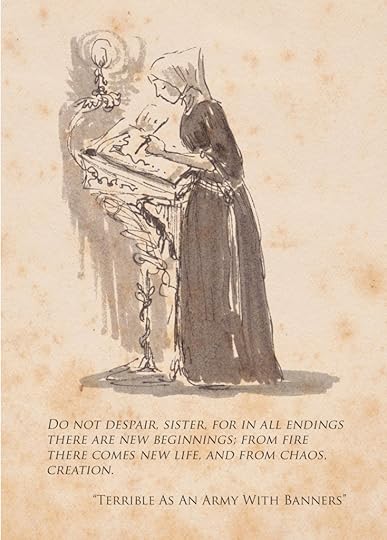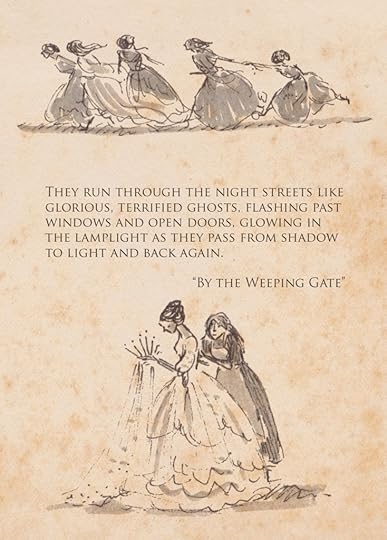Angela Slatter's Blog, page 71
October 10, 2015
Prize Pack from Tor.com
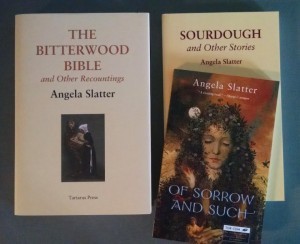 Tor.com are giving away a Slatter prize pack (to USians and Canadians – except Quebec. Sorry, Quebec). So if you’d like to nab a copy of the novella Of Sorrow and Such, and the collections Sourdough and Other Stories and The Bitterwood Bible and Other Recountings, go here!
Tor.com are giving away a Slatter prize pack (to USians and Canadians – except Quebec. Sorry, Quebec). So if you’d like to nab a copy of the novella Of Sorrow and Such, and the collections Sourdough and Other Stories and The Bitterwood Bible and Other Recountings, go here!
October 8, 2015
Focus 2014 Interviews: Angela Slatter
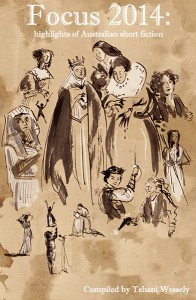 Once again, I’m talking to myself. This time about “St Dymphna’s School for Poison Girls”, which is reprinted in Fablecroft’s Focus 2014.
Once again, I’m talking to myself. This time about “St Dymphna’s School for Poison Girls”, which is reprinted in Fablecroft’s Focus 2014.
What was the inspiration for this story?
The title for this story came from a friend’s throwaway line about St Dymphna’s Home for the Wealthy Insane (thanks, Dr Carson). I thought “No, St Dymphna’s Home for Poison Girls” and my mind went off on its own and sat in a corner, conjuring visions of a boarding school like the one in Charlotte Brontë’s Villette except with more murder and fewer French lessons.
I thought about finishing schools for young ladies and the sorts of girls who are sent there, and the kinds of families they come from. I thought about the strife between grand houses caused by matters of pride and honour (not to mention thefts), and wondered what might happen if the female offspring from those grand houses might be taught something useful … which was still misused by said houses. I wondered about the sorts of young women who might not think beyond what their families were sending them to do, who didn’t say to themselves “Sod this for a game of soldiers – I’ve just been taught these great and terrible skills by independent and terrifying women, why should I go off to die in the service of my family? Why shouldn’t I too become an independent and terrifying woman?”
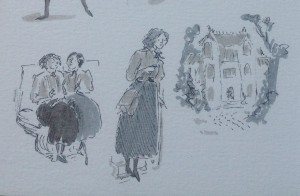
Art by Kathleen Jennings
Which is precisely the sort of thing Mercia does think for she’s not one of the herd, although in the end she follows a different path as well. And she’s also been sent off to do something dangerous by her surrogate family, the Little Sisters of St Florian, so in some ways she’s also a pawn but smart enough to break away. Mercia is the youngest daughter of Wulfwyn from “The Burnt Moon”, and the youngest sister of Delling, who frees the ghosts of Southarp in “The Undone and the Divine”. She appears again in the new collection The Tallow-Wife and Other Tales. This story first appeared in The Review of Australian Fiction, Volume 9, Issue 3 – and won the Aurealis Award for Best Fantasy Short Story.
What should new readers know about you?
I work with fairy tale themes. Always. Apparently. Even when it seems I’m not, there’s going to be some line that hints back to a fairy or folk tale. I just do.
And I like to put little links between my stories, just tiny things. For example, in the story “By My Voice I Shall Be Known” set in the Sourdough world, one of the locations the main characters visits is Lady’s Mantle Court; in my novella “Ripper”, which is set in Victorian London, I also have a Lady’s Mantle Court. It amuses me.
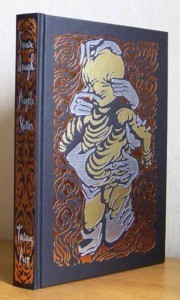 Can you remember the first story you read that made you want to be a writer?
Can you remember the first story you read that made you want to be a writer?
I think it was “The Tower” by Marghanita Laski. I always read a lot and loved reading, but I read this one as part of Year 11 English and can still remember the buzz it gave me and that striking sense that I wanted to write things like that.
Name your top five favourite authors.
Angela Carter, Margo Lanagan, Tanith Lee, John Connolly, Kelly Link.
The future of Australian spec-fic is …?
Expanding! Gaining world attention – as it should!
October 7, 2015
Focus 2014 Interviews: Sean Williams

Credit – James Braund http://www.jamesbraund.com/
The legendary and delightful Sean Williams talks about his tale “The Legend Trap”, which appears in Fablecroft’s Focus 2014.
What was the inspiration for your story?
“The Legend Trap” is set in the universe of the Twinmaker series, each book of which more or less works as an urban myth. That set me wondering about what other urban myths might exist in this world, so I wrote a few of them, and at last count there were seventeen. When I was approached by the editors of Kaleidoscope for a story, something about their brief combined with the whole urban myth thing in the back of my head and out popped “The Legend Trap”. It wasn’t supposed to be this long. The trickiest thing was to avoid being too meta at the expense of telling a good yarn with good characters and all. In the end, I was happy with it and really pleased it picked up a Ditmar Award.
What should new readers know about you? 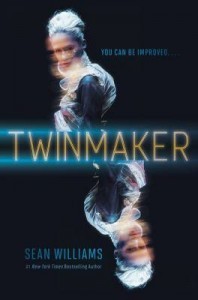
I write lots of different things for lots of different readers. Horror, SF and fantasy, mainly, for adults of all ages (from eight up), and all sorts of word lengths. I’m restless that way, always looking for new things to try. Maybe that’s because I live in Adelaide. I find it easier to take chances creatively when all around me is calm.
Can you remember the first story you read that made you want to be a writer?
I suspect it was a combination of TV and stories, specifically Doctor Who and the novelisation of Doctor Who by Terrance Dicks, both of which I was obsessed with at an early age. The first story I remember writing was full of things I ripped off from both these sources, so I guess it’s fair to credit them/give them the blame.
Name your top five favourite authors.
At the moment, they would be Sarah Waters, Tamora Pearce, Frances Hardinge, Lee Child, and Sage Blackwood. (I feel bad that there are no Australians on this list. Will work to correct that.)
The future of Australian spec-fic is …?
Brilliant, action-packed, and utterly unpredictable!

Sean Williams is the bestselling author of over forty novels and one hundred stories, including some set in the Star Wars and Doctor Who universes. His latest include Twinmaker: Fall and Troubletwisters: Missing, Presumed Evil, the latter co-written with Garth Nix. He lives just up the road from the best chocolate factory in Australia with his family and a pet plastic fish.
October 6, 2015
Avid Event: The Politics of Myth
 This one looks interesting:
This one looks interesting:
Join author Stephen Knight in-conversation with Bronwyn Levy discussing his book, The Politics of Myth at Avid Reader.
Monday the 12th of October
Avid Reader Bookshop, 193 Boundary Street West End
6.00pm for a 6.30pm start
Tickets $7.50 – RSVP ONLINE or to events@avidreader.com.au or call us on 3846 3422
What are the Politics of Myth? If Barack Obama and the late Gough Whitlam are two heads of state that fall into the Arthurian mythic hero class, do we have a contemporary Ned Kelly? Perhaps a Joan of Arc among today’s feminists? The mythic status of the great Sherlock Holmes has fallen victim to forensic reality and the William Shakespeares of tomorrow are more likely to be masters of the tweet than scribblers of drama. But is Julian Assange our new Merlin?
In this searching and unusual new work, Stephen Knight, who recently returned to Australia after twenty years in Europe, reviews the patterns to be found among the narratives of the past that have survived to the 21st century. Mythic figures he says are a focus for conflicts, and they continue to draw the attention of the public, though dressed in contemporary modes. Through these mythic figures the complexities and events we experience in our lives are considered from a different viewpoint.
ABOUT STEPHEN KNIGHT
Stephen Knight worked as a Professor of Literature in Australia and Britain, focusing on the inter-relationship of culture and society, publishing many books and essays, with major work on King Arthur, Merlin, Robin Hood and world crime fiction. He is currently an Honorary Research Professor at the University of Melbourne.
For more information on this or any other Avid Reader event, please contact Krissy Kneen or Madeleine Laing at events@avidreader.com.au
Cover for Finnegan’s Field
And Irene Gallo does it again!! This is the cover by Greg Ruth for my novelette, Finnegan’s Field. Purchased by Ellen Datlow for Tor.com, this will appear on 13 January 2016.
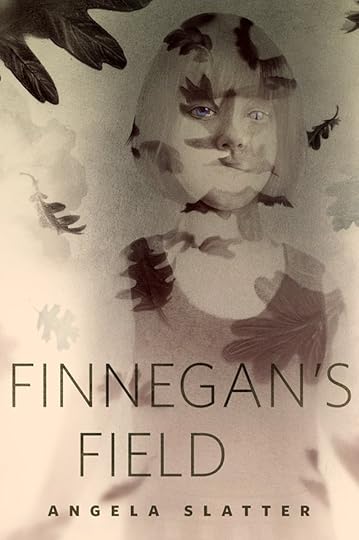
Art by Greg Ruth
In Irish lore, when children go under the hill they don’t come out again.
Ever.
When children go under the hill, they stay where they’re put.
Forever.
When children go under the hill, parents, though they pray and search, don’t truly think to see them anymore.
Never.
In Finnegan’s Field, South Australia (POP. 15,000) the inhabitants had more than enough Irish left in their souls that, despite a century and a half since emigration, they bore these losses with sorrow, yes, but also with more than a little acceptance. A sort of shrug that said Well, it was bound to happen, wasn’t it? Eire’s soft green sadness with its inherited expectation of grief ran in their veins so they did little more than acquiesce, and they certainly did not seek explanations.
Until Madrigal Barker came home.
Focus 2014 Interviews: Alan Baxter
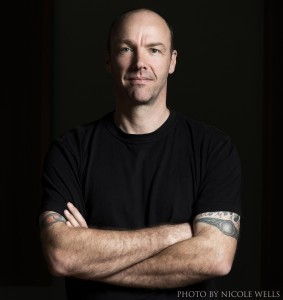
Alan Baxter, author of the Alex Caine urban fantasy series, talks about his Focus 2014 story.
What was the inspiration for your story “Shadows Of The Lonely Dead”?
I’ve had a lot of experience with extended terminal illness in my life, in people young and old. Far too much, to be honest, when even one is too many. But I knew that at some point I would address aspects of that experience through stories and this is one of those tales. The focus on the palliative care hospice in this yarn is drawn from bitter personal experience, and the sense of natural justice is something I explore in a lot of my work.
What should new readers know about you?
I like good single malt scotch… Oh wait, you don’t mean in order to send me gifts? They should know that I mostly write dark weird urban fantasy and horror, often delving into the realms of crime, mystery, noir and, occasionally, science fiction. They should also know to never judge me by my browser history.
Can you remember the first story you read that made you want to be a writer? 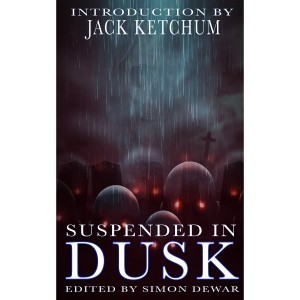
No. I think I was born with a desire to spin yarns. At least, I can’t remember ever not having that urge.
Name your top five favourite authors.
That’s impossible! I can name five that come to mind right now as incredibly formative on me as a writer and as a person. By the time I get to the end of this list, I could easily name five more, and five more, etc. However, for now:
Clive Barker
Ursula K Le Guin
Alan Moore
Michael Moorcock
Anne McCaffrey
…aaaaannnddd already I’m uncomfortable with people I’ve missed, but I’ll let that stand for now.
The future of Australian spec-fic is …?
Assured.
 Alan Baxter is a British-Australian author who writes dark fantasy, horror and sci-fi, rides a motorcycle and loves his dog. He also teaches Kung Fu. He lives among dairy paddocks on the beautiful south coast of NSW, Australia, with his wife, son, dog and cat. He’s the award-winning author of six novels and over sixty short stories and novellas. So far. Read extracts from his novels, a novella and short stories at his website – www.warriorscribe.com – or find him on Twitter @AlanBaxter and Facebook, and feel free to tell him what you think. About anything.
Alan Baxter is a British-Australian author who writes dark fantasy, horror and sci-fi, rides a motorcycle and loves his dog. He also teaches Kung Fu. He lives among dairy paddocks on the beautiful south coast of NSW, Australia, with his wife, son, dog and cat. He’s the award-winning author of six novels and over sixty short stories and novellas. So far. Read extracts from his novels, a novella and short stories at his website – www.warriorscribe.com – or find him on Twitter @AlanBaxter and Facebook, and feel free to tell him what you think. About anything.
October 5, 2015
Focus 2014 Interviews: Faith Mudge
 Today, Brisbane writer Faith Mudge talks about her Focus 2014 tale.
Today, Brisbane writer Faith Mudge talks about her Focus 2014 tale.
What was the inspiration for your story, Signature?
I was annoyed! I’d been reading a book about books, generally one of my favourite things, but this one took quite a judgmental approach to people’s reading and it made me consider what story about books I wanted to read instead: a shop that’s friendly and inclusive, staff who love books as much as the customers and create a sense of community, a safe niche where you can be yourself. The beloved bookshops of my childhood are gone but finding a new one is always a small homecoming. It also seems to me a common misconception about bibliophiles that a book highly admired in one circle should please everyone, literary works or classics in particular. I don’t agree! It depends so much on what you’re looking for, what you need at a particular time, and that varies wildly from person to person – from mood to mood, even. The story started with Priya and Rieke arguing pretty much that exact point and their characters developed very quickly from there. Priya is her own self, of course, but I drew some inspiration from a couple of people in my family who have similarly widespread reading interests and one of them has the indomitable cheerfulness that Priya weaponises, because I’ve always seen that as a bit of a superpower.
What should new readers know about you?
I am fascinated by fairy tales, folklore and mythology, and blog about all those things extensively at beyondthedreamline.wordpress.com. I write mostly spec fic but range all over the place within that, from fantasy and urban fantasy to steampunk and science fiction. History is another of my oldest loves and this year I published a purely historical story about Elizabeth I in FableCroft’s anthology Cranky Ladies of History – I may write more in that genre, we’ll see. And I am always interested to hear what people think of my work!
Can you remember the first story you read that made you want to be a writer? 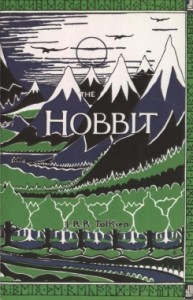
The first book I can remember reading is The Hobbit, and it was certainly a powerful influence. My earliest writing attempts involved a lot of quests, the ambitious kind that demanded I draw enormous maps to match and were punctuated by really terrible poetry. I tried to make picture books too, which I at least usually finished. The first time I actually thought ‘I will write a proper novel’ was…well, I’m not entirely sure how old I was, probably around eight? After I drew some very detailed, vaguely mythic women – personifications of Empress Time and her daughters the Seasons, I think – my mother said I should write a story about it. Which I did. (It was AWFUL). Drawing was always a huge part of writing for me and still is, I often get ideas about characters by sketching them. Other books that had a strong influence on the way I write include Cecilia Dart-Thornton’s Bitterbynde trilogy, Patricia A. McKillip’s Ombria in Shadow and Jane Austen’s everything.
Name your top five favourite authors.
This is a much better question than my top five favourite books – I can’t answer that one and cheat if I’m expected to. My favourite authors tend to change depending on mood, but five I can’t do without on my shelf are Patricia A. McKillip, Douglas Adams, Margaret Mahy, Jane Austen and Diana Wynne Jones.
The future of Australian spec fic is…
… exciting! I’m mainly involved in the small press scene right now and there’s been such a fantastic range of anthologies opening up in the past few years as publishers seek out more diverse stories. There should be space for everyone in the world we live in, but there’s absolutely no excuse for not making space in the worlds we imagine. From what I’ve seen, Australian spec fic is heading in a very positive direction and I’m so happy to be a part of it.
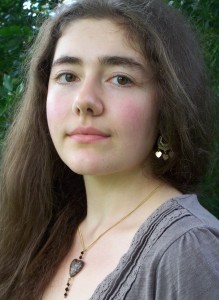 Faith Mudge is a Queensland writer with a passion for fantasy, folk tales and mythology from all over the world – in fact, almost anything with a glimmer of the fantastical. Her stories have appeared in various anthologies, including Kaleidoscope, Phantazein and Hear Me Roar. She posts reviews and articles at beyondthedreamline.wordpress.com. Somewhere in the overcrowded menagerie of her mind, there are novels. She is even writing some of them.
Faith Mudge is a Queensland writer with a passion for fantasy, folk tales and mythology from all over the world – in fact, almost anything with a glimmer of the fantastical. Her stories have appeared in various anthologies, including Kaleidoscope, Phantazein and Hear Me Roar. She posts reviews and articles at beyondthedreamline.wordpress.com. Somewhere in the overcrowded menagerie of her mind, there are novels. She is even writing some of them.
October 4, 2015
Focus 2014 Interviews: Dirk Flinthart
 Today’s Focus 2014 victim, errr, author, is the redoubtable Dirk Flinthart.
Today’s Focus 2014 victim, errr, author, is the redoubtable Dirk Flinthart.
What was the inspiration for your story, “Vanilla”?
The inspiration for “Vanilla”? I have to give credit to the editors of Twelfth Planet. They set the parameters. I just… found a space. And quite honestly, I don’t know what ‘inspired’ the piece at all. Like all half-decent stories, of course, a strong part is personal. The goal of the anthology was to write characters and voices which fall outside the usual paradigm. Currently in Australia we have social problems which revolve around incoming refugees, so I felt that was a good place to begin.
“Vanilla” revolves around the interaction between a teenage girl of Somali extraction and a number of alien refugees who have been assigned to her high school. It might have been fun trying to write from the alien perspective… but to me, that felt far too ‘science fiction.’ We’ve had plenty of ‘alien perspective’ stories in the past, but not too many from the point of view of a smart, confused and culturally alienated Somali girl. More to the point, she represented a greater challenge for me. Creating a believable but wholly alien viewpoint is bread-and-butter for a science fiction writer, and it’s relatively easy because who is going to disagree with you? Get your alien physiology and culture more or less consistent, and the character POV follows as a matter of course. A teenage Somali girl in an Australian private school, though — that’s a real-world idea. Portraying someone like that; someone completely foreign to my own experience, but grounded in the world we all know — that felt like a challenge.
In the end, I found common ground with Kylie (the Somali girl.) I think I had to. I don’t know if I’m good enough to create a strongly believable character with whom I have no shared mindspace. (I’ll have to try someday.) The common ground in question: loneliness and isolation, of course.
What should new readers know about you? 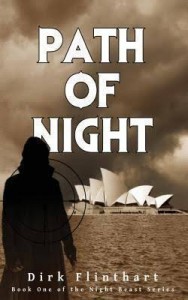
What should new readers know about me? Huh. You know, I have no idea. As a reader, I’ve always cared more about the stories and the ideas than the people that create them. Once a story is out there in the wild, it doesn’t belong to the writer any more. It belongs to the people who read it, recreate it in their heads, and bring it to life. I guess, though, that it might be worth saying: don’t necessarily take this story as representative of what I do. I’m glad it came out well. I enjoyed the challenge, and I’m pretty happy with the evocation of Kylie and her dilemma. But I’m also known for swashbuckling fantasy adventure stories, explodey horror/thrillers, and off-beat comedy. It’s probably to my detriment as a marketable commodity that I shift between genres and tones, and to an extent that does bother me. On the other hand, if somebody wants to offer me real money to produce works in a particular style and genre, I’ll give it a shot. Until then, I will continue to write exactly what I enjoy… and that is a very broad spectrum indeed.
Can you remember the first story you read that made you want to be a writer?
Can I remember the first story I read that made me want to be a writer? You must be joking! I never wanted to be a writer. I just wrote stuff.
My parents tell me I was reading when I was two years old. I can certainly remember reading adult-level retellings of the Labours of Heracles and the Elder Edda when I was five, and I loved those tales even more than I loved the Batman comics I was also reading. There never came a moment when I read a particular story and said: “Why yes! I shall become…. a WRITER!”. They asked me to write stories in primary school, so I did, and it was fun. And I played all kinds of table-top RPGs throughout my teens and twenties, and that was no end of creative fun. I wrote pieces for the university newspaper — including the odd piece of fiction — and that was PAID fun. So, you know: the outcome was inevitable.
Honestly, I have been a storyteller in one form or another for all of my life that I can recall. When you’re stuck with a habit like that, you can either hide it and treat it as a shameful addiction… or you can get it out in the open and try to do something useful with it. I picked the latter, obviously.
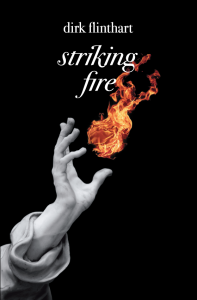 Name your top five favourite authors.
Name your top five favourite authors.
Top five favourite authors, in no particular order: Cordwainer Smith, Ursula K LeGuin, Mikhail Bulgakov, Dylan Thomas, Michael Moorcock.
Understand that at least three of those five names are likely to vary on any given day of the week. And no; you don’t get to ask me why these are favoured. Go read some of their stuff and work it out for yourself. If you catch up with me at a convention or a launch or something, we can sit down and argue about it over a drink.
The future of Australian spec-fic is …?
The future of Australian spec-fic is dark and confused. The paradigm shift in the publishing industry brought about by the rise of digital technologies is changing everything. It’s easier than ever to get published, harder than ever to command an audience. Genre lines blur and run together. (They were never distinct in the first place!). ‘Literature’ with a capital ‘L’ backs itself into a corner becoming increasingly irrelevant to anything outside its own narcissistic, self-referential prose. The day is very close at hand when broad genres are largely dead, as traditional spaces such as crime, romances, science fiction and fantasy acquire more market share, and utilise ever more sophisticated and effective literary techniques. At the same time, micro-genres are already beginning to blossom. Readers are choosing very particular genre-spaces that can’t be summed up by single-word descriptors: western steampunk romance; futuristic crime procedural thriller; non-supernatural splatter horror, and so forth.
The Patreon model and other forms of crowdfunding strike me as a likely future. I suspect that as authors, we’ll write directly to an audience. We’ll build our online spaces to show off our abilities. We’ll publish short pieces and a few longer ones to acquire status and push our way into the audience. And then… we’ll write a set of tantalising pitches for new works, and hang them up in a crowd-funding space, and once the financial rewards are high enough to meet our particular requirements, we’ll write the actual books and release them to our supporters first, then to a broader market.
In other words, it’s not too far off what’s going on right now. Except that the role of big publishers is going to continue to decline, other than in the area of the MegaBlockBuster… which is a pity, really. I don’t tend to like This Week’s Bestseller, and without a decent-sized firm with reasonable cash flow, it’s very difficult for good editors to get paid properly. (And if you don’t think we need good editors, you are desperately ignorant!
Dirk Flinthart writes from north-eastern Tasmania, where he raises his three kids and 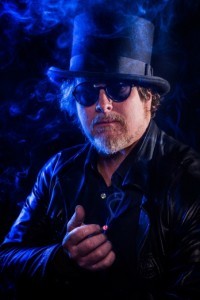 tries to look after his long-suffering wife. While he thinks of himself as a writer and indeed, has a history of turning out stories in science fiction, fantasy and horror which pick up the odd award and regularly make the Australian best-of compilations, he also teaches martial arts, maintains a fifty-acre properly (haphazardly!) and is still waiting to hear from the marking panel on the outcome of his Masters degree. His story in the Focus anthology came from Twelfth Planet’s “Kaleidoscope” collection, and received an Aurealis Award. Flinthart has just released a collection of short works through Fablecroft, called “Striking Fire”. He’s currently working on two novels, a screenplay, and a raft of short works.
tries to look after his long-suffering wife. While he thinks of himself as a writer and indeed, has a history of turning out stories in science fiction, fantasy and horror which pick up the odd award and regularly make the Australian best-of compilations, he also teaches martial arts, maintains a fifty-acre properly (haphazardly!) and is still waiting to hear from the marking panel on the outcome of his Masters degree. His story in the Focus anthology came from Twelfth Planet’s “Kaleidoscope” collection, and received an Aurealis Award. Flinthart has just released a collection of short works through Fablecroft, called “Striking Fire”. He’s currently working on two novels, a screenplay, and a raft of short works.
October 1, 2015
Focus 2014 Interviews: Tansy Rayner Roberts
 This is the third year that indie press Fablecroft has produced a Focus volume, a series that collects an elite selection of work which has received acclaim via national and international Awards recognition. So, naturally, I have subjected the ToCers to a series of questions.
This is the third year that indie press Fablecroft has produced a Focus volume, a series that collects an elite selection of work which has received acclaim via national and international Awards recognition. So, naturally, I have subjected the ToCers to a series of questions.
First writer off the rank is the de-lovely Dr Tansy Rayner Roberts.
What was the inspiration for your story, “Cookie Cutter Superhero”?
It was written for Kaleidoscope (which was looking for diverse teen protagonists) and I knew I wanted to write a story about disability from the point of view of a teenager. I was really interested in the downside of prosthetics, and how for some users working around a missing limb is preferable to using an artificial one – as an able-bodied person, it’s a hard idea to wrap your head around, that the medical “fix” isn’t going to work for everyone.
I wrote about superheroes because it’s a topic I know well, and it gave me a chance to address many of the things that drive me nuts about super team books – the ‘only one girl’ tradition (that the films are replicating long after comics stopped doing it), the way that female superheroes are often treated as afterthoughts and fashion plates, and the spinoff tradition around so many of our more iconic female superheroes, where they’re a legacy of a more famous male hero and get dismissed as part of his story. 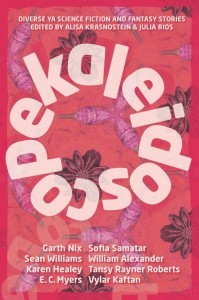
Combining these two ideas also allowed me to address the pervasive (and often problematic) trope of disability in comics, where becoming a superhero is either a magical cure, or the disability itself is expressed as a superpower. The question of whether my protagonist will be “cured” of her amputated arm by becoming a superhero is central to the story, and the answer isn’t (cannot be) a simple one.
What should new readers know about you?
I write fiction, blog and podcast about SFF with a particular focus on feminist issues. I love superheroes. I recently finished a web serial on my blog which is a gender-swapped space opera take on The Three Musketeers, which you can read for free. If readers like “Cookie Cutter Superhero”, they’ll probably also like my novelette Fake Geek Girl, which was published at Review of Australian Fiction. One of the podcasts I co-host, Galactic Suburbia, recently won a Hugo. Oh, and I’m going to be doing an episode by episode review of upcoming Netflix series Jessica Jones (about a failed superhero playing noir detective) for Tor.com in November!
Can you remember the first story you read that made you want to be a writer?
Probably the Little House on the Prairie series – I read them because a friend I played with at school adored them, and was always insisting that we played that at lunchtime. Yes, I was live action RPing at the age of 9! (I was Laura) I was definitely drawing book covers of the books I planned to write at that age (so much quicker than writing them) and pretty much every time I read a new genre or style of story, I planned to write a book along the same lines. My lack of followthrough before Grade 8 means the universe was deprived of my French Ballet epic, my prairie romances, my Anne of Green Gables style family sagas, my British high school prankfests, and so on.
Name your top five favourite authors.
This is a terrible question to ask a person whose social life is 80% other authors! Mary Wesley, Diana Wynne Jones, Terry Pratchett, Eva Ibbotson, Alexandre Dumas.
The future of Australian spec-fic is …?
Small press. They’re the reason we have such a thriving short fiction scene, and it’s not just a place where new writers cut their teeth any more – it’s for established writers to bring their experiments, their out-of-the-box fringe writing, as the big publisher lists shrink. My own experience is that the small presses aren’t just supportive and dynamic in response to the changing book industry, but that they’re also great on international distribution – not to mention nurturing writers, fragile honeybees that we are, into creating innovative work with a distinctive Australian voice.
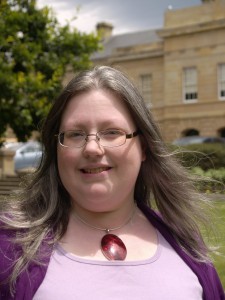
Tansy Rayner Roberts
Tansy Rayner Roberts is the author of the Creature Court trilogy, Ink Black Magic and Love & Romanpunk, among many other SFF books. She is a Hugo-award winning blogger and podcaster, living in Tasmania with her family. You can find Tansy at her blog http://tansyrr.com/ and on Twitter @tansyrr. Tansy also writes cozy culinary murder mysteries under the name Livia Day.

